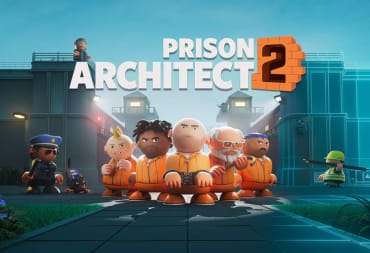The survival-horror genre has faced a revival in recent years, with popular releases in franchises such as Resident Evil. Dead by Daylight has transformed asymmetrical multiplayer, and many refer to it as the Super Smash Bros. of horror thanks to its massive crossovers. But many have forgotten about what could be considered the first survival-horror game, a game with foibles and ideas that remain in the genre to this day. Haunted House released in February 1982, making this year its 40th anniversary. How has the genre evolved, and how has it retained elements first introduced on the Atari 2600 cartridge?
By today's standards, Haunted House is a bare-bones experience. The character is a featureless protagonist save for a pair of floating eyes. Sound effects have a low-quality nostalgic crust to them, and most of it is played in silence save for the simulated footsteps. In order to win, they must collect three parts of an urn and escape the titular haunted house alive. It's a simple premise with a clearly defined goal. If the creatures within the house attack the protagonist too many times, it's game over.
The Impact of Haunted House on Survival Horror

This escape from the house is made more complicated by the fact the character has a very limited inventory system. This genre trend continues to this day, though some titles have moved away from it. While navigating the house, the player must decide whether to carry a key (opening doors and therefore generating progress), a scepter to protect themselves, or the urn itself, the end goal. Selecting which item to carry, and when, is a huge part of the decision-making process when playing Haunted House. The building has three floors and a basement, so it could be a long trek between their items.
Another component in horror is disorientation. This remains difficult to pull off, as it's a careful balancing act between unfairly punishing the player and creating tension. The house is dark, making it difficult for the protagonist to see. On lower difficulties, they'll have to light a match to see any nearby items scattered on the ground. At higher levels of play, they'll need to use it just to avoid bumping into walls. Thankfully, the player has an infinite number of matches at their disposal in exchange for their short burn time and small light radius. Little distinguishes the rooms from each other besides the color of the walls and a number on the player's HUD. If a monster enters a room with the player, it blows out the match and can create confusion in the scramble to escape. The programming is quite simple, but it's executed in a realistic way.
Lastly, it used the concept of powerful, dangerous enemies to great effect. There was no way to permanently kill the spider, bat, or ghost, so the player needed to evade them with a combination of dexterity and quick thinking. While this seems to have become more of a set piece nowadays (the Nemesis segments in the Resident Evil 3 Remake especially come to mind), the trope of a dangerous pursuer remains. You couldn't complete your main objective without exposing yourself to danger. The scepter is an item that brings comfort and security but doesn't offer much in the way of progress beyond exploring in relative peace. The popularity of Mr. X (from Resident Evil 2 Remake) and especially Lady Dimitrescu (Resident Evil Village) shows how much this creates a sense of urgency that spurs a player to complete objectives.
Haunted House Today

Many have forgotten Haunted House as it celebrates 40 years. There was a brief revival when a 2010 remaster appeared on the Wii, Windows, and the Xbox Live Arcade, but it was short-lived and had a distinctly "shovelware" aesthetic. In November 2014, Haunted House: Cryptic Graves was released on Windows. Now a first-person adventure, it attempted to develop more of a plot and even had some interesting visual effects. It has been widely panned by both critics and consumers for issues such as odd character animations, the protagonist's constant chatter even in subtitles, and poor voice acting.
Since Cryptic Graves, there's been little on the grapevine regarding Haunted House. French company Atari SA (formerly Infogrames) owns the rights, though the company has been mired in controversy over the Atari Token cryptocurrency they announced in 2020. The future for Haunted House, and indeed many Atari properties, remains uncertain now that the company has attracted significant criticism and split into Atari Gaming and Atari Blockchain.
Despite its lackluster remasters and reboots, Haunted House holds a dedicated fanbase to this very day. It brought many creative ideas to the fore that are now staples in survival horror. It's a sadly forgotten gem that gave birth to an entire genre, and not many games can claim that sort of distinction for themselves. While it's considered ancient in terms of technology now, games like Haunted House on the Atari 2600 started us down the path to the massive number of games and genres today.
Have a tip, or want to point out something we missed? Leave a Comment or e-mail us at tips@techraptor.net













